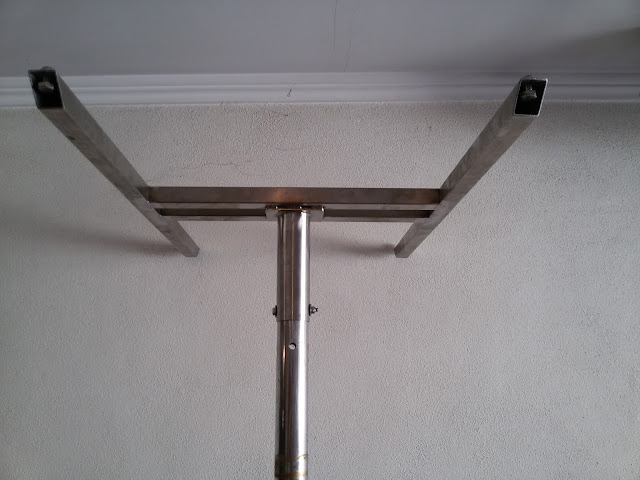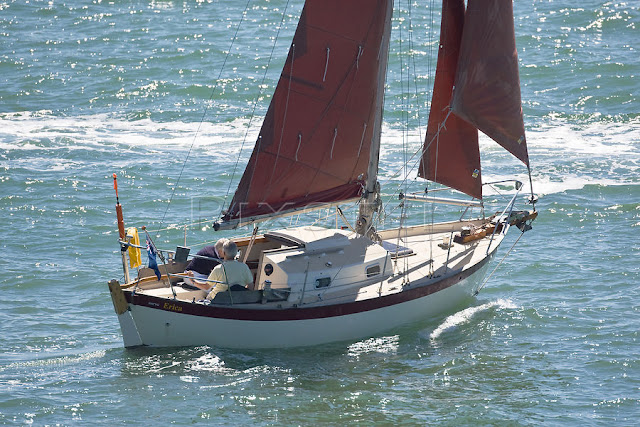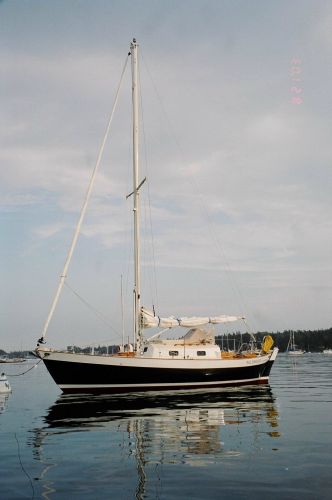You lose plenty during your lifetime; it can be frustrating and sad but you shouldn't dwell on it for too long. When you lose your life, you won't even give it a second thought. ~ Martello Mateus
Now I have to find the time to get all this metal aboard, scrape the propeller, put in the 3rd reefing lines, wash the boat, buy some groceries and untie the lines on July 26. I'm motivated.
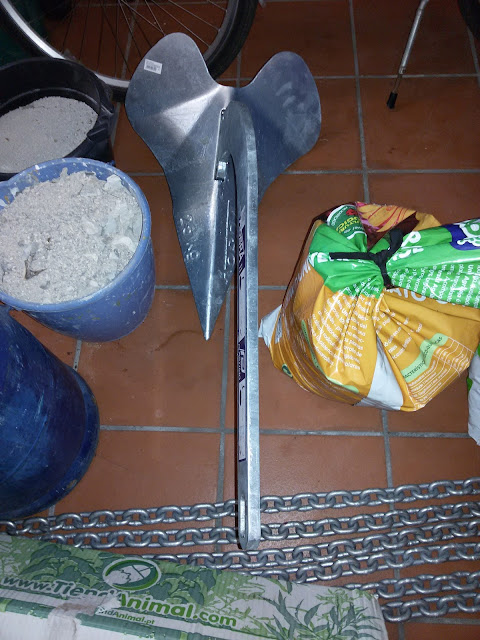 |
| My new mistress...the others are history. |
Over the years I've had enough anchors to become a semi-qualified expert on the matter, at least on how to lose them.
I lost my first anchor - a genuine and brand new 45lb CQR the first time I took Jakatar for a sail on Lake Erie, Canada. An anchor-roller pin was supposed to hold it in place, but it didn't...and, no, it wasn't attached to any chain or rode. I was really clueless back then.
Years later, I lost an almost brand new 35lb CQR at the marina in Peniche. I had two anchors on the roller, the 35lb CQR and a knock-off 45lb CQR. I assume a transient sailor decided that two anchors was one too many and pinched the genuine one. Either that or it worked itself free and swam back to Canada.
Last year, I lost a nearly new Rocna 25 plus 150 feet of excellent chain in the bay of Sesimbra on my way to the Algarve. It's a long, long expensive story.
Last year I also cracked the hinge on a 55lb Chinese no-name anchor when it got stuck in a rock. The damn thing was useless anyway, total crap, good for scraping the ocean bottom. It's in my garden now as a decorative piece.
So now I bought a new 25 kg Kobra II and 60 meters of calibrated 10 mm chain, plus 50 m of 10 mm line for my third reefing lines. All for a cool 1,003 euros.
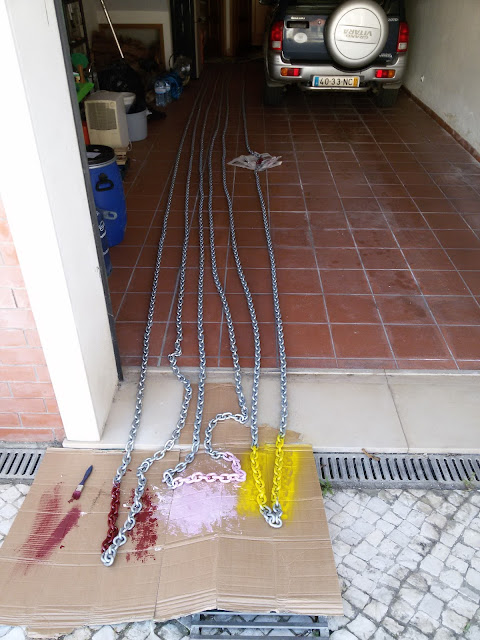 |
| Painting the chain depth markers in funky colors. |
Kobra vs. Rocna - I chose the Kobra for a number of reasons:
- It's half the price
- According to tests, it has almost the same holding power and sets quickly
- In thick mud it doesn't bring up a ton of black goo like the Rocna. Tests reveal that the Rocna may not reset quickly because of all this mud sticking to it, while the Kobra will. Since I leave the boat anchored in the muddy bottom of Culatra, this may be a big advantage.
I also picked up my solar panel mounting pole from the metal shop. I adapted the Rutland wind generator pole, and it looks pretty good, I think. The job cost 60 euros. Not bad.
